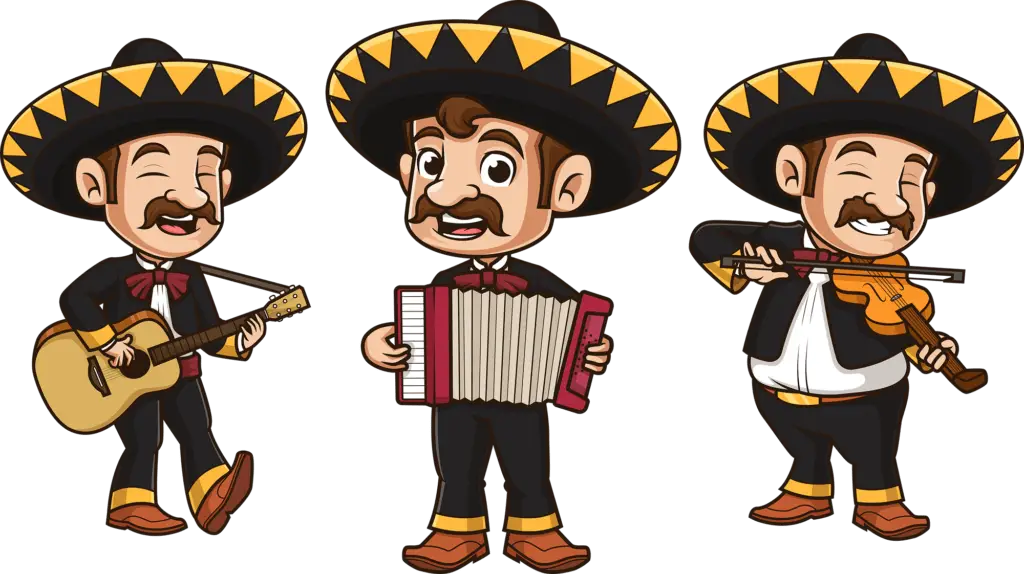
Spanish is an easy and very useful language to learn for English speakers. But as with learning any language, the learning process can initially be difficult. However, there are many ways to help you along the way.
Spanish is one of the most prevalent languages used around the world so learning Spanish is helpful for anyone. Whether it be writing flashcards, listening to Spanish music, or going to a Spanish market, you can find many fun ways to learn Spanish.
These are 21 different tips to use when learning Spanish, and no matter how far along you are in your Spanish journey, you can use any of these to help you! Variety makes repetition palatable and repetition is key.
Contents
- 1 Practice as Much as Possible
- 2 Label Items Around the House in Spanish
- 3 Make Conjugation Charts
- 4 Understand the Difference Between Conjugations
- 5 Go to a Spanish Market
- 6 Learn About Spanish/Latin Culture
- 7 Listen to Spanish Music (and Sing-Along!)
- 8 Watch Telenovelas
- 9 Travel to a Spanish Speaking Country
- 10 Read Spanish Texts
- 11 Practice Translating Spanish to English
- 12 Download Duolingo on Your Phone or Mobile Device
- 13 Make Flashcards
- 14 Be Consistent with Spanish
- 15 Have a Conversation with a Native Spanish Speaker
- 16 Change the Language on your Device to Spanish
- 17 Try Both Reading and Cooking a Spanish Recipe
- 18 Find a Spanish Pen-Pal
- 19 Change the Subtitles on Your TV to Spanish
- 20 Start a Journal in Spanish
- 21 Write Your Grocery List in Spanish
- 22 The Final Talking Point for 21 Tips to Learning Spanish
Practice as Much as Possible
Have you ever heard the phrase, practice makes perfect? Well, there’s some validity to it! Outliers by Malcolm Gladwell (linked to Amazon) provides a deeper dive into the science behind it, but suffice it to say, practice as much as possible if you want to get good at anything!
The best way to get better at anything is to practice, and when it comes to learning a language, practice is the best way to get better. There are many ways to practice learning a language, but the biggest one is speaking it as much as possible.
Label Items Around the House in Spanish

Vocabulary is a huge part of learning Spanish, and when you think about what vocabulary words you use most often, it is usually things around your or your house. Something that will help you remember all of these vocabulary words in Spanish is labeling items in Spanish around your home.
Take your bedroom; for example, you could label the shelves in your closet based on what goes there. You could make a shelf for las camisas (shirts), los pantalones (pants), las chaquetas (jackets), etc. This will help your brain remember vocabulary words of the things that you use the most.
You can write out your own labels using index cards or sticky notes, but if you prefer, Amazon has inexpensive options that work quite well such as these!
Make Conjugation Charts
In Spanish, there are many different conjugations you are going to have to learn with Spanish verbs. Whether it be the present, preterite, imperfect, or any of the others, making a chart with all of the different endings to the verbs will help translate and memorize.
In every chart, you will have six different forms into which you will need to conjugate the verb. The forms are in the order as follows:
- I (yo)
- You (tu)
- He, She, It (el/ Ella/ ud.)
- We (Nosotros)
- You All (vosotros)
- They (Ellos/ellas/uds.)
Conjugation charts are somewhat challenging to create as there are both -ar, -ir, and -er endings that could be different, and many verbs have irregular forms as well. Often, ir and -er endings have the same conjugation, making charts a bit easier to make.
Understand the Difference Between Conjugations
Basic Spanish starts by learning how to speak and read in the present tense, with the simplest form of conjugation. As you start to dive deeper into the language, you will learn about new tenses such as the imperfect.
Learning the difference between all the tenses and their conjugations is a lot to go through, but it is beneficial to make sure you know the difference between what the conjugations mean and how to conjugate them.
Here is Barron’s 501 Spanish Verbs with tenses, from Amazon, that comes highly recommended!
Go to a Spanish Market

One way to immerse yourself in Spanish culture without actually going out of the country is by going to a Spanish market. At these markets, you can find food, snacks, meats, and desserts, and often times they even have a restaurant where you can buy authentic handmade foods.
By going to a Spanish market, you can get a sense of the culture and work on speaking and learning the language as well. You can read what different foods are in Spanish, speak with the workers, and try some of the foods and snacks for yourself.
Learn About Spanish/Latin Culture
When learning the Spanish language, it’s important to also learn about the culture. Learning about foods, holidays, traditions, etc., all help you understand the language because you will learn common phrases and names used in the culture.
Spanish is also spoken in many different countries; twenty countries currently have Spanish listed as their official language, and all of them have different cultures and traditions. Of course, it’s good to know as much about each country as possible, but you don’t need to know everything to speak the language.
Some common holidays to know about our Día de Los Muertos, which is mostly celebrated in Mexico, and Carnival in Rio de Janeiro.
Listen to Spanish Music (and Sing-Along!)

Listening to Spanish music is a super fun way to help you learn the language, and as you learn more vocabulary and understand what the words are, it gets even better! One way to really help with learning the language is to translate the lyrics. That way, and you can see the difference between English and Spanish.
Listen to Spanish music as much as possible, and you will see yourself picking up more on the language, and you will be able to understand the language easier as you are listening to it faster.
Watch Telenovelas
Telenovelas are Spanish shows, more specifically soap operas, that really dramatize their words and make it easy to understand them. Watching these shows and trying your best to be able to translate the terms is a great way to learn and practice Spanish.
You don’t have to just watch telenovelas; there are also Spanish sit-coms, documentaries, and other shows that all are great ways to improve your Spanish skills. If you want something a bit more familiar, you could watch a movie or tv show you know well in English but watch it in Spanish.
The unique thing about telenovelas is that they are a series, and you may find yourself a bit more interested in what’s going on than you originally anticipated! This just means you will have more opportunities to practice speaking and listening to Spanish.
Travel to a Spanish Speaking Country
This one is a bit out there, but if you really want to help yourself learn and practice the language, one of the best ways to do that is by actually going to a Spanish speaking country. There, you will be able to interact with the language everywhere you go and with most people you meet.
By going to a Spanish speaking country, you don’t only get to communicate in the language more, but you also get to experience the most authentic form of the culture. Also, pretty much every Spanish speaking country is absolutely beautiful and makes for a great vacation as well.
Read Spanish Texts

Reading Spanish texts is a great way to familiarize yourself with the language. While reading, take out the pieces you know and then use a Spanish dictionary to help yourself figure out the rest.
This can be good practice for conjugating verbs because while you are figuring out the areas you don’t know, you may need to conjugate some new verbs. Use what you know with conjugations to try and figure out the tense of the text you are reading.
When reading texts, you want to start small; you don’t want to overwhelm yourself with too many words and conjugations you don’t know yet. Start at your level of Spanish or slightly above, then increase the level of text as you know more.
Practice Translating Spanish to English
Oftentimes in Spanish, you are translating English to Spanish. When you are new to learning, this is essential because you only know English and need to understand what certain words mean in Spanish. As you build a more extensive knowledge base for Spanish, translating Spanish to English is a great way to practice.
Some ideas for things you could translate include:
- Books
- Nutrition Labels
- Magazines
Translating Spanish will help your brain recognize certain vocabulary words or conjugations that may have been difficult to remember before translating. Translating everyday items such as nutrition labels is also beneficial if you plan to visit a Spanish-speaking country.
Download Duolingo on Your Phone or Mobile Device
Duolingo is an app that is a great tool to learn Spanish and includes higher levels as well. It also makes it really easy to learn, even from your own phone. If you are interested in another language, they also have a whole list of other languages you can learn as well.
If you want to download the app but already have past knowledge of Spanish, you can test into higher levels and skip steps. They then make it both easy and fun for you to learn new vocabulary and conjugations.
Make Flashcards
Making flashcards is probably the simplest way to remember vocabulary words and the word in different conjugations. When making flashcards, start with your level of knowledge and then work your way to harder flashcards as you learn more of the language.
Flashcards are great because they help you remember vocabulary, but also you can make flashcards with conjugated verbs. For example, you could have one side of the card say “I want,” which would be “yo quiero” on the other side. Another example could be “You have,” where the Spanish translation would be “tu tienes.”
Be Consistent with Spanish
In order to learn any language, you have to be consistent with speaking it. If you are learning without the help of taking a class, this is especially important because it is on you to make sure that you get the practice that you need.
If you are taking a class, even outside of class, you should try to speak as much Spanish as often as possible and know that it’s okay to make mistakes. If you aren’t taking a class, you should try and speak the language as often as possible. Throughout the day, try and replace as much English with Spanish as possible and see how much you know.
Have a Conversation with a Native Spanish Speaker
Native Spanish speakers are often hard to understand when you first start speaking the language, but as you learn more and recognize more words, having a conversation with a native speaker is a great way to practice.
More often than not, whoever you are speaking with will just be happy that you are learning the language. When in conversation, try not to be nervous and know that it is okay to make mistakes because they can always be corrected. Speaking with a native speaker will challenge you to listen and respond in Spanish, which is the best practice you can get.
Change the Language on your Device to Spanish

If you are a bit deeper into the language and have a knowledge base set, changing the language on your phone to Spanish is a great way to practice and use the language in a familiar setting.
Changing the language on your phone will feel confusing at first, but it also gives you an opportunity to learn a lot of new terms and vocabulary. If you find words you might not know, try your best to take a guess at what the word is based on where it is on your phone, then look it up to see if you are right or not. Either way, you are still gaining new vocabulary.
Try Both Reading and Cooking a Spanish Recipe

This one is a super fun way to learn Spanish and immerse yourself in part of the culture as well. Find a Spanish recipe written in Spanish, and then try your best to both read and cook the recipe!
If you run into some vocabulary you don’t know while going through the recipe, look up the word, try to remember it, and keep going! There are also so many options of different foods to make, from Spain, Latin America, and South America.
Some great options for recipe’s could be:
- Gazpacho
- Paella
- Tacos al Pastor
- Tamales
Find a Spanish Pen-Pal
Having a Spanish Pen-pal is a fun way to learn the language because you communicate, read, write, and connect with someone from a Spanish-speaking country. Something exciting and fun about a pen pal is oftentimes, you are both trying to learn each other’s native language.
Finding a pen pal on your own can be difficult, especially if you don’t know many people who speak Spanish, let alone live in a Spanish speaking country. Websites such as mylanguageexchange.com allow you to find pen pals a bit easier and in many different areas of the world.
A Spanish pen pal allows you to practice the language and also gives you the opportunity to make a friend in a new country.
Change the Subtitles on Your TV to Spanish

When you are watching TV in English, a way to practice Spanish is by changing the subtitles to be in Spanish and read them as you watch the show. This will help your brain connect Spanish and English in real-time and is really helpful when learning Spanish.
If you wanted to, you could also watch a show that is in Spanish and change the subtitles to be in English. This is a bit more of a challenge for your brain, but if you are learning the higher levels of Spanish, this could be a great way to get some practice in.
If you are new to Spanish, start out with some basic children’s TV shows where the vocabulary is pretty simple. This might seem a bit boring watching TV for kids, but it is simple enough to where you will understand most of the Spanish. As you gain knowledge, you can, of course, watch new TV shows with more vocabulary and grammar.
Start a Journal in Spanish
Writing a Spanish journal is a really great way to connect yourself to the language personally. By writing a journal in Spanish, you are going through your day, thoughts, and feelings and writing them all down.
What is really great about a Spanish journal is that you will be using vocabulary and phrases that you will end up using quite often in Spanish. Throughout the day, you probably already express your thoughts and feelings in English; creating a journal can help you do that in Spanish.
It’s also important to try to write in your journal every single day because this will give you the most practice and help your brain remember the most about what you are writing down.
Although you don’t have to use something fancy or expensive, I do recommend purchasing a special journal such as this one from Amazon for your language learning to help keep you motivated.
Write Your Grocery List in Spanish

A grocery list is an item you most likely use once a week or more; writing this in Spanish will help familiarize yourself with common foods around your home. Knowing the names of different foods in Spanish is very helpful, especially if you ever need to order something in Spanish.
In addition to just writing your list, put your list into sections based on food groups. That way, you will be able to classify the foods easier in Spanish. If you need to, you can also write your list in English on the back of the Spanish one; that way, you have a quick reference to remember what it means if you forget a word.
Making your Spanish language learning authentic by incorporating it into everyday tasks is key to success!
The Final Talking Point for 21 Tips to Learning Spanish
In an article published in Hispania, the journal for the Association of Teachers of Spanish and Portuguese, researchers found that simply concentrating on grammar and many of the things taught in a classroom setting can be counter-productive. This points to the need for much variety in learning Spanish.
Learning Spanish, or any second language, can be a bit tricky, especially as you start getting into higher levels with new concepts and vocabulary. Luckily, there are tons of ways to be able to help yourself learn the language. Actively speaking, listening, and communicating in Spanish are all essential in order to understand the language in the best way possible.
Learning Spanish can be hard in the beginning, but by using these tips learning the language can be significantly easier.
Additional Sources
https://www.tastingtable.com/dine/national/traditional-mexican-dishes
